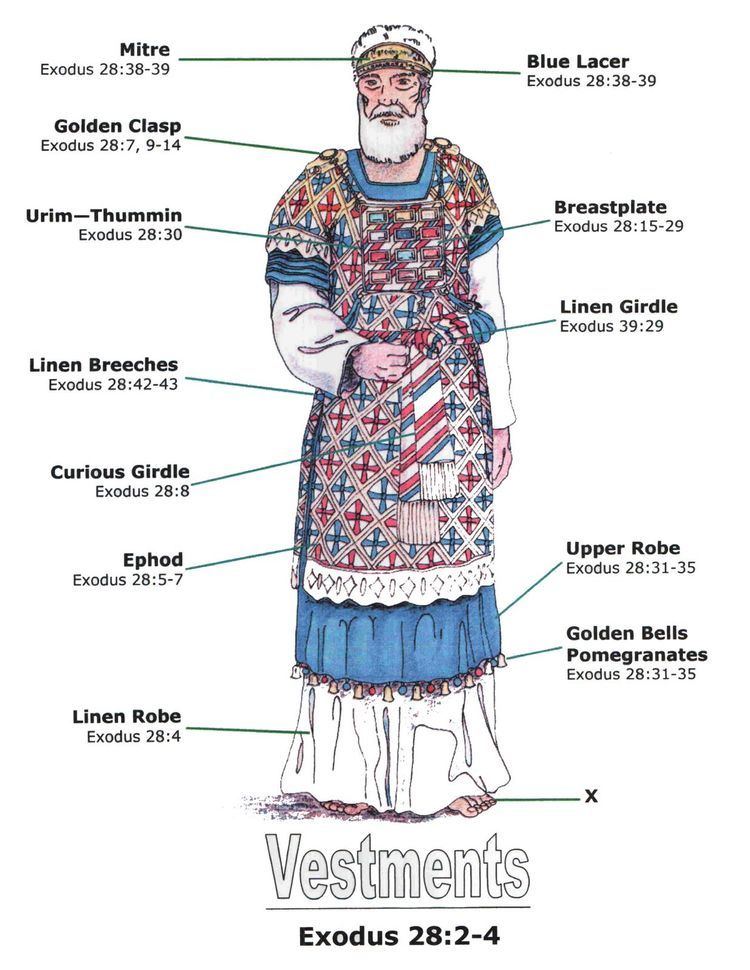 | ||
An ephod (Hebrew: אֵפוֹד ’êp̄ōḏ; /ˈɛfɒd/ or /ˈiːfɒd/) was an artifact and an object to be revered in ancient Israelite culture, and was closely connected with oracular practices and priestly ritual.
Contents
- Sanctuary high priest robe urim thummim breastplate ephod
- Description
- Wearing and composition
- Origins
- Extended uses
- References

In the Books of Samuel and the Books of Chronicles, David is described as wearing an ephod when dancing in the presence of the Ark of the Covenant (2 Samuel 6:14, 1 Chronicles 15:27) and one is described as standing in the sanctuary at Nob, with a sword behind it (1 Samuel 21:9). In the book of Exodus and in Leviticus one is described as being created for the Jewish High Priest to wear as part of his official vestments (Exodus 28:4+, 29:5, 39:2+; Leviticus 8:7).
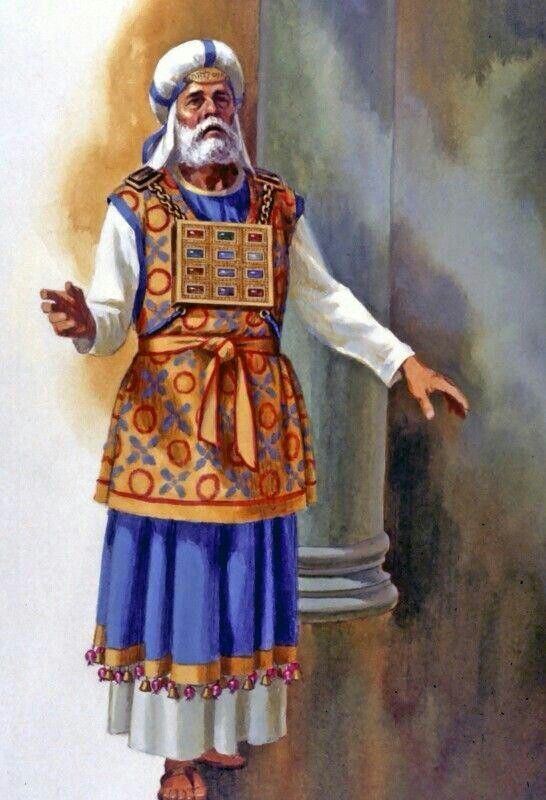
In the Book of Judges, Gideon and Micah each cast one from a metal, and Gideon's was revered (Judges 8:26-27, Judges 17:5).
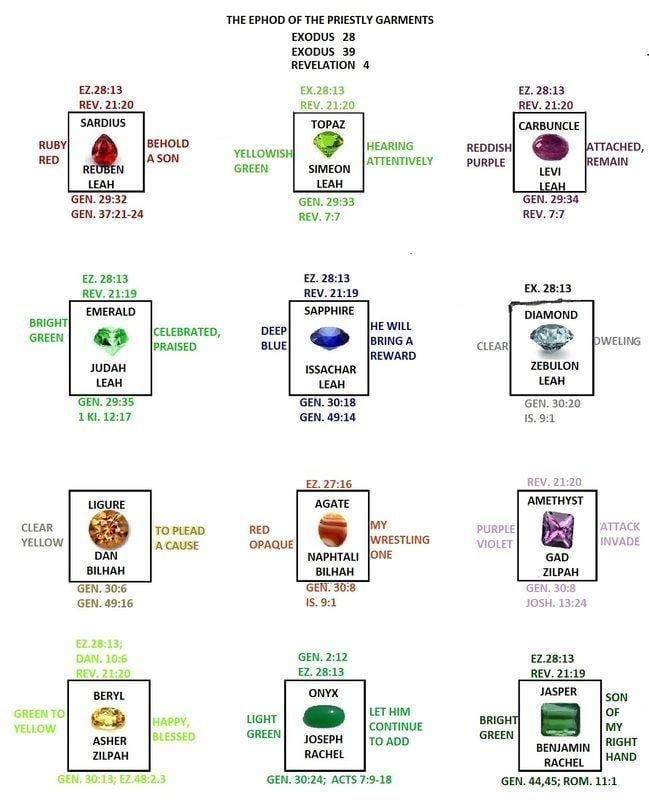
Sanctuary high priest robe urim thummim breastplate ephod
Description

In the Bible, in the contexts where it is worn, the ephod is usually described as being linen, but did not constitute complete clothing of any kind, as the Books of Samuel describe. The book of 1 Chronicles states that David was "clothed with a robe of fine linen, as were all the Levites who bore the ark... [and] David also wore an ephod of linen," [NAS Bible translation; 1 Chronicles, 15:27] "and David was wearing a linen ephod" [NAS Bible translation; 2 Samuel, 6:14]. There appears to have been a strong religious and ceremonial implication to wearing an ephod, since the 85 priests at Nob are specifically identified as being the type of people who wore an ephod; though the Masoretic text here describes them as being linen ephods (1 Samuel 22:18) the word linen is not present in the Septuagint version of the passage, nor is it present when the Septuagint describes David and Samuel as girding themselves with an ephod. Therefore, some textual scholars regard its presence in the Masoretic text as a later editorial gloss.
Wearing and composition
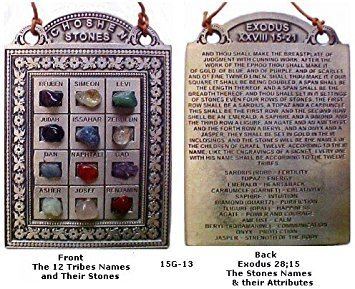
A passage in the Book of Exodus describes the Ephod as an elaborate garment worn by the high priest, and upon which the Hoshen, or breastplate containing Urim and Thummim, rested. According to this description, the Ephod was woven out of gold, blue, purple, and scarlet threads, was made of fine linen, and was embroidered with skillful work in gold thread (Exodus 28:6-14) the Talmud argues that each of the textures was combined in six threads with a seventh of gold leaf, making 28 threads to the texture in total. Some people attempt to assign meaning to the details of the Ephod, but such meanings are not given in either the biblical description or the Talmud.
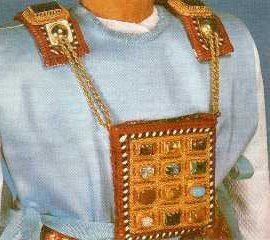
The Biblical description continues describing the size of the ephod as a square measuring one span by one span(Span the width of an outstretched hand from little finger tip to out stretched thumb tip.(Exodus 28:16 Exodus 39:9 KJV.) Stating that it was held together by a girdle, and had two shoulder straps which were fastened to the front of the ephod by golden rings, to which the breastplate was attached by golden chains (Exodus 28:6-14) from this description it appears to have been something like an apron or skirt with braces, though Rashi argued that it was like a woman's riding girdle. The biblical description also adds that there were two engraved gems over the shoulder straps (like epaulettes), made from shoham (thought by scholars to mean malachite, by Jewish tradition to mean heliodor, and in the King James Version is translated as "onyx"), and with the names of the 12 tribes written upon them; the classical rabbinical sources differ as to the order in which the tribes were named on the jewels (Sotah 36a).
Origins
Textual scholars attribute the description of the Ephod in Exodus to the priestly source and to a date later than the other mentions of Ephod; biblical scholars believe that the Ephod may have evolved over time into this highly ceremonial form from more primitive beginnings (the simple linen form described in the Books of Samuel), much like the manner in which the highly liturgical maniple evolved from an ordinary handkerchief.
Extended uses
Besides use as a garment, an Ephod was also used for oracular purposes, in conjunction with Urim and Thummim; the books of Samuel imply that whenever Saul or David wished to question God via oracular methods, they asked a priest for the ephod. Since the oracular process is considered by scholars to have been one of cleromancy, with the Urim and Thummim being the objects which were drawn as lots, the Ephod is considered by scholars to have been some form of container for the Urim and Thummim; to harmonise this with the descriptions of the Ephod as a garment, it is necessary to conclude that the Ephod must have originally been some sort of pocket, which the priests girded to themselves. However, the biblical text states the Urim and Thummim were placed in the breastplate, not the ephod (Leviticus 8:8). The integration of the stones in the breastplate, as well as the Hebrew usage of "Urim" as "lights," suggest that the Urim and Thummim may have been a type of ocular device through which the priest would look when receiving divine communication.
The object at Nob, which must have been somewhat freestanding since another object is kept behind it, and the objects made by Gideon and by Micah, from molten gold, logically cannot have just been garments. The object made by Gideon is plainly described as having been worshipped, and therefore the idol of some deity (possibly of Yahweh), while the object made by Micah is closely associated with a Teraphim, and the Ephod and Teraphim are described interchangeably with the Hebrew terms pesel and massekah, meaning graven image, and molten image, respectively.
Even the ephods used for oracular purposes were not necessarily just pieces of cloth, as they are not described as being worn, but carried (though some translations render 1 Samuel 2:28 as wear an ephod rather than carry an ephod); the Hebrew term used in these passages for carry is nasa, which specifically implies that the Ephod was carried either in the hand or on the shoulder. The conclusion thus is that Ephod, in these cases, referred to a portable idol, which the lots were cast in front of; some scholars have suggested that the connection between the idol and the garment is that the idol was originally clothed in a linen garment, and the term Ephod gradually came to describe the idol as a whole.
Some scholars propose that the term "ephod" originally referred to a container used to hold stones for casting lots. Over time, the meaning of the term expanded to include various objects that could house these stones or were employed in divination practices.
According to the Talmud, the wearing of the ephod atoned for the sin of idolatry on the part of the Children of Israel.
